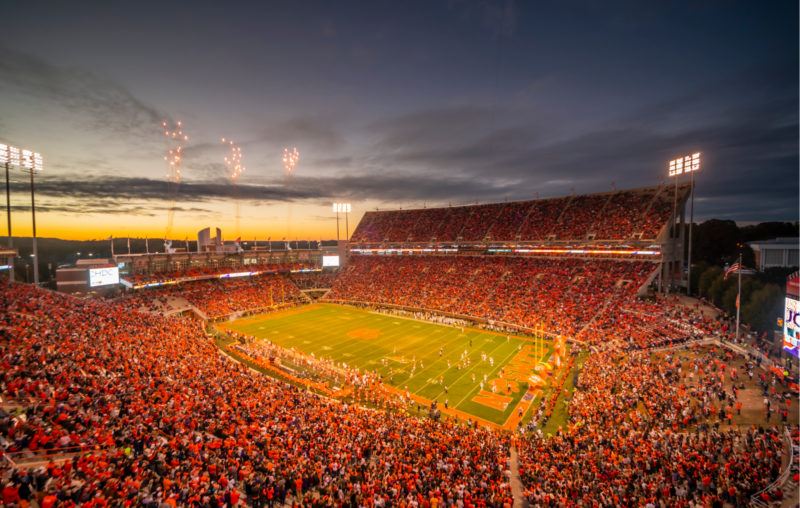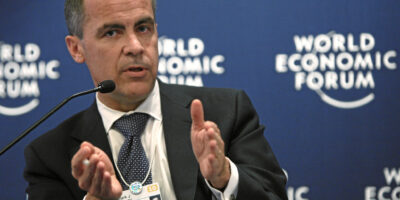We Need College Sports This Fall

It has been 130 days since the first week of lockdowns in the United States. Sports fans missed the NCAA Men’s College Basketball Tournament (March Madness), as well as the conclusion of both the NBA and NHL seasons. Spring training and the MLB season opener was delayed, only to start this week with a shortened season.
The schools and businesses that rely on March Madness, the NBA, and the NHL postseason have suffered from the cancellations. Local economies which look forward to major and minor league baseball have lost millions in revenue. And with the football season quickly approaching, mistakes that have cost teams, players, venues, vendors, the media, the hospitality industry, and other local businesses are available as lessons, for those who will take them. Some arose from not concluding a season, some from conducting an abbreviated one, and some for outright cancellations.
Sports are not a “Reward for a Functioning Society”
In response to MLB owners suggesting that fans could be in stadiums by the end of the season, Washington Nationals pitcher Sean Doolittle recently remarked that sports are “like a reward for a functioning society.”
As a nation, many cooperated when Federal, state, and local governments shuttered businesses, imposed lockdowns, and mandated masks in public spaces. I witnessed the shutdowns in New York City, where some even wore masks while running in Central Park. Citizens accepted this severe curtailing of life to ostensibly prevent hospital overcrowding and “flatten the curve;” yet while the curve is allegedly flattened, four months later we find ourselves living a life not vastly different than what we were told would be a “two-week shutdown” in early March.
Sports are a necessary part of life. In a developed, market economy, with consumer dictates and disposable income, referring to a long national history of sports and gaming entertainment as a “reward” is an insult to a major industry. Children begin developing social skills outside the family as soon as they learn to run down the street, ride a bike, throw a ball, swing a bat, and informally organize physical competitions as a necessary and inherent part of social and physical development. That this almost seamlessly transitions into formally organized youth teams – from Little League and Pop Warner teams into junior and later high school teams, and ultimately college and professional careers (not to mention amateur but nevertheless serious hobby teams) should be lost on no one.
It is in this environment that competitiveness, teamwork, and strategy-building with no barriers or prejudices other than a focus on winning are honed. Drive and social skills resulting from early team and opponent interactions translate direction into how citizens engage future classmates, friends, employers, neighbors, spouses, and so on. We learn to value what others have to offer in order to achieve a common goal.
It is a culture we adopt in the early stages of our lives. It never leaves us, developing further as we mature and develop personal experiences. The values and lessons imparted by organized sports are, to be sure, among the firmest moorings of an ethical commercial society.
No; these are not rewards for a “functioning society.” During a similar traumatic disconnect, the Great Depression, amateur and professional sports not only continued but evolved. Far from a functioning society, even amid the rapid onset of poverty and destitution baseball continued largely uninterrupted. Ballplayers suffered through pay cuts and the game saw a number of changes, including radio broadcasts, an increase in support from women (Surdam 201, 221), and the organization of the first All-Star game that we still enjoy today.
Team owners and players were confronted with decreasing value and attendance but adapted the sport to the changing times and continued its life. Doolittle is among the uncountable numbers who continue to reap the benefits of baseball’s adaptation to hard times.
The COVID-19 driven panic has not only affected the roughly 326,000 people in the United States (athletes, coaches, scouts, umpires, refs, and other officials) who work directly in professional sports but media personnel, vendors who sell T-shirts and food outside stadiums, bar and restaurant owners in the neighborhoods of stadiums and arenas, and hotel owners who reach occupancy from travelers for opposing teams. These and others rely on sports: not as a “reward” for being some vaguely-defined “functional society,” but as an outcome of skill, specialization, and entrepreneurship.
Recent Testing Among Major Leagues
Altogether, the MLB, MLBPA, NBA, NBPA, and NHL have conducted 24,665 COVID-19 tests with 95 testing positive. This gives us an approximate positive rate of 0.004% (notwithstanding other sources of inaccuracy, including Type I and Type II errors). Nationwide, testing for the novel coronavirus is increasing every day, even as deaths are decreasing. With greater understanding of how to treat the disease and medical resources increasingly available, most of the arguments for a continued delay or cancellation of sporting seasons or events are disappearing.
And at an average age of 28, baseball players are at a particularly low risk for severe illness. Players have showed up eager to practice and compete. They have also decided to take the risk to enter the season; if they are concerned about contracting the virus, they are free to opt out of the season. Doolittle has not.
And just as players have the freedom to opt out of playing, fans have the option to watch games at home. As my colleague recently noted, large gatherings have not automatically resulted in a spike in infections, hospitalizations, or deaths. Some sports are even beginning to host events with fans. The average MLB, NBA, NHL, and NFL fan is under the age of 60, and thus those most likely to attend a game in person are not at serious risk. As the clinical picture of COVID-19 vulnerability continues to clear up, we know that individuals 60 and older and/or have underlying health problems are at much higher risk for severe sickness than those who are in their 40-50s. The majority of US citizens are under the age of 65, leaving the majority of our population at minimal risk for serious illness or death.
The decision to attend a game should be left to individuals, with teams and their venues providing guidance, but ultimately leaving attendance as a matter of choice. It defies both science and common sense to terminate commercial and entertainment activities based upon the risks posed to a small portion of the population.
Why College Football?
At an average age of 19, college athletes are even less vulnerable than professionals. Colleges have the resources to test student athletes as they come on campus for training camps to gear up for the fall. With the knowledge that college students are at a low risk for severe illness and the benefits of herd immunity that having teams and staff on campus can bring, it should be a no-brainer that schools can have students, faculty, and administration on campus this fall with no repercussions.
Bringing all players and coaching staff on campus also provides schools with the opportunity to test increasing crowds in a close setting as more fall athletes and staff come on campus every week, especially early before the rest of the student body moves in.
Somewhat understandably, college students were sent home during the initial outbreak of the novel coronavirus owing to uncertainty; four months later the data are in, and students are at a minimal risk for severe illness, let alone death. At this point, the prolongation of the barriers to normal campus life are an unnecessary punishment for both students and their families. Most paid tuition yet wound up missing out on academic and social interactions.
In some cases, juniors and seniors with job offers have seen them rescinded and graduates furloughed. If colleges are planning on hosting students on campus, the prospects for a college football season should not be dim. Having students on campus means giving them the freedom to live their campus life, which includes the option to attend a game or watch it at home.
Autumn will mark the beginning of the 2020 fall semester and the start of college football. The top 25 programs alone rake up annual revenues of $2.7 billion. Conferences are individually deciding if they should have a season and how, while colleges and universities are deciding if and how to have students on campus.
In order to get families to pay the full sticker price, schools must allow students on campus and fraternize how they please. School administrations know they cannot function without students on campus this fall, and those who decide to show up deserve the full experience they are paying for and expect. Recently the Big Ten and Pac-12 have agreed to a shortened, conference-only season, although the difference between travelling for a regular season game versus a championship seems negligible: players will still board a plane, need lodging, eat and otherwise spend time in a different city. Fans will still show up to tailgate and enjoy the game.
Truncating the season by cancelling games forces attendees to change their plans, puts undue pressure on athletes at a pivotal time in their careers, and changes the entire calculus of the season. Roughly 98% of college athletes will never be paid to play the game they dedicate their lives to; they are owed the opportunities that a complete season affords.
College radio hosts and other pundits have been talking in circles for months regarding the fall season. Why not let individual coaches, players, and fans determine its fate: they, better than anyone else, know the stakes and the risks. While commissioners and other heads of sports associations are nominally in charge, the aggregate effect of teams and fans making their preferences clear may push them toward more courageous solutions.
Sean Doolittle’s argument that sports are a reward for a functioning society not only misallocates blame, but rings hollow: he is collecting a big paycheck despite four Washington Nationals games played this year so far. The hundreds of thousands of cooperative players, vendors, restaurant and hotel owners, bartenders, waiters, waitresses, and untold millions of fans who have suffered personally, socially, and economically since March cannot bear the losses for much longer, let alone face shortened or canceled seasons. This is our chance to learn from the mistakes made with spring and summer sports and continue with the originally planned college football season. The losses already go far beyond losing games.











